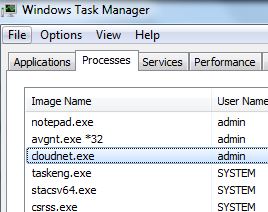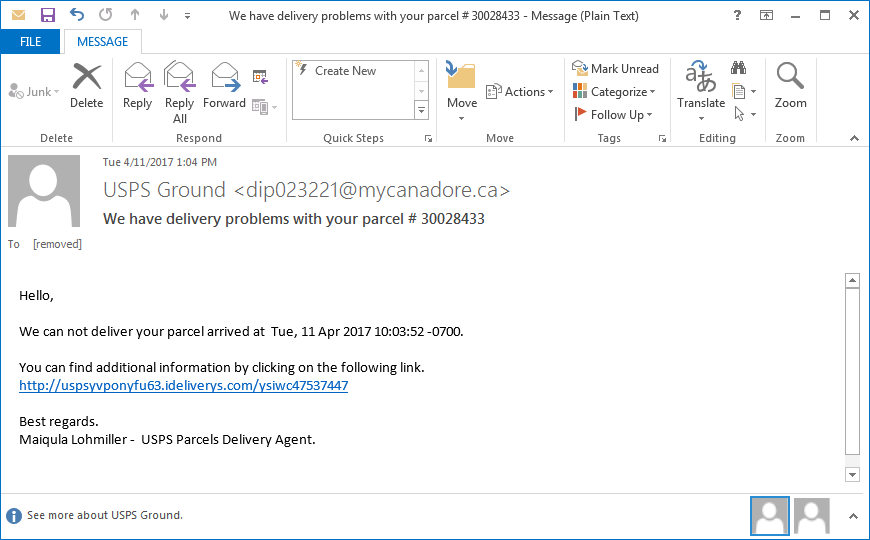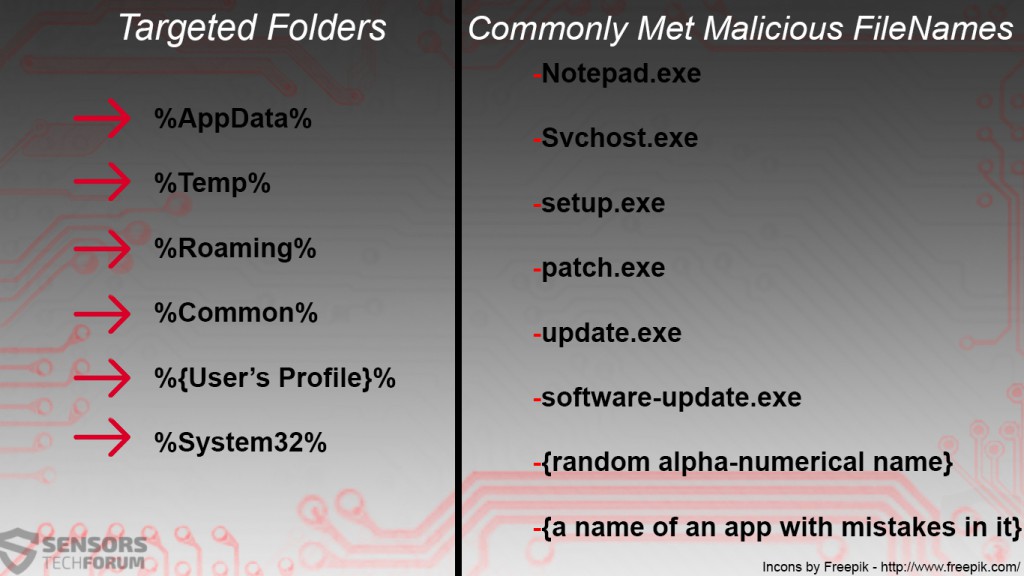 This article has been created in order to help explain what is the Cloudnet.exe cryptocurrency miner and how to remove it from your computer completely and prevent it from mining for cryptocurrency tokens on your PC.
This article has been created in order to help explain what is the Cloudnet.exe cryptocurrency miner and how to remove it from your computer completely and prevent it from mining for cryptocurrency tokens on your PC.
Cloudnet.exe is the name of the process that pretends to be of the Cloudnet cloud computing service for Minecraft networks. In reality however, the process represents a cryptocurrency miner which aims to mine for various different type of cryptocurrencies on the computers that have been infected by it. The malware may put your CPU as well as GPU under heavy load, resulting in your computer, becoming unstable, sluggish and it may even freeze at times. More so, the Cloudnet virus may also break some of the components of your PC, if the malware remains for a long time.

Threat Summary
| Name | Cloudnet.exe miner |
| Type | CryptoCurrency Miner |
| Short Description | Aims to infect your computer and use it’s CPU, GPU and other resources to turn it into a miner for cryptocurrencies. |
| Symptoms | Hightened CPU and GPU usage and overheating. The victim PC may break if this virus mines for longer periods of time. |
| Distribution Method | Spam Emails, Email Attachments, Executable files |
| Detection Tool |
See If Your System Has Been Affected by malware
Download
Malware Removal Tool
|
User Experience | Join Our Forum to Discuss Cloudnet.exe miner. |

Cloudnet.exe Virus –
Infection Process
Cloudnet.exe is a cryptocurrency miner type of malware. The virus is however partially a Trojan Horse, meaning that it may use an exploit kit to slither into an unprotected PC while being undetectable. This is done via many different methods, most of which include the usage of intermediary malware that may pretend to be a legitimate file. Such malware may be spread via various different methods, among which include the usage of spam e-mail attachments which make it so that the malicious file appears like a legitimate invoice, receipt, order confirmation, banking statement or other type of important document. Here is how such e-mails may appear like:

In the event that you want to stay protected against infections by Cloudnet.exe in the future, reccomendations are to disable key weakness services in Windows, instructions for which, you can find below:

Cloudnet.exe – Activity
Once this virus has infected your computer, it’s malicious payload may be dropped, the main file among which is the cloudnet.exe process, used to mine cryptocurrencies, using your PC’s resources. Besides it, several other files with different names may also be dropped on your computer system. The files are usually located in the following folders under different names:
After the malicious files are dropped on your PC, the cloudnet.exe miner may immediately begin the mining process for cryptocurrencies. This happens after the virus connects your PC to a network which is known as mining pool that combines different infected computers to mine for the cryptocurrency designated by the malware operator. And since all of the infected computers are linked to the malware operator’s cryptocurrency wallet, the tokens in the wallet grow faster as more computers are infected.
In addition to simply mining for cryptocurrencies, the cloudnet.exe virus may also perform other unwanted activities on your computer, like:
- Steal your credentials.
- Obtain financial information.
- Obtain passwords and ID names.
- Log your keystrokes.
- Order confirmation.
- Take screenshots on your computer.
- Download other malware or self-update to remain hidden even if you believe you have deleted it.

How to Detect and Remove Cloudnet.exe
In order to remove the Cloudnet.exe miner malware, we strongly recommend that you follow the removal instructions down below. They are specifically designed to help you get rid of this virus either manually or automatically. Since manually there is no guarantee that you will be able to completely removal all malware on your PC, security experts often recommend scanning it by using a malware-specific removal software which can remove Cloudnet.exe and other associated malware and unwanted software automatically plus ensure that your computer retains future protection as well.
Preparation before removing Cloudnet.exe miner.
Before starting the actual removal process, we recommend that you do the following preparation steps.
- Make sure you have these instructions always open and in front of your eyes.
- Do a backup of all of your files, even if they could be damaged. You should back up your data with a cloud backup solution and insure your files against any type of loss, even from the most severe threats.
- Be patient as this could take a while.
- Scan for Malware
- Fix Registries
- Remove Virus Files
Step 1: Scan for Cloudnet.exe miner with SpyHunter Anti-Malware Tool



Step 2: Clean any registries, created by Cloudnet.exe miner on your computer.
The usually targeted registries of Windows machines are the following:
- HKEY_LOCAL_MACHINE\Software\Microsoft\Windows\CurrentVersion\Run
- HKEY_CURRENT_USER\Software\Microsoft\Windows\CurrentVersion\Run
- HKEY_LOCAL_MACHINE\Software\Microsoft\Windows\CurrentVersion\RunOnce
- HKEY_CURRENT_USER\Software\Microsoft\Windows\CurrentVersion\RunOnce
You can access them by opening the Windows registry editor and deleting any values, created by Cloudnet.exe miner there. This can happen by following the steps underneath:


 Tip: To find a virus-created value, you can right-click on it and click "Modify" to see which file it is set to run. If this is the virus file location, remove the value.
Tip: To find a virus-created value, you can right-click on it and click "Modify" to see which file it is set to run. If this is the virus file location, remove the value.Step 3: Find virus files created by Cloudnet.exe miner on your PC.
1.For Windows 8, 8.1 and 10.
For Newer Windows Operating Systems
1: On your keyboard press + R and write explorer.exe in the Run text box and then click on the Ok button.

2: Click on your PC from the quick access bar. This is usually an icon with a monitor and its name is either “My Computer”, “My PC” or “This PC” or whatever you have named it.

3: Navigate to the search box in the top-right of your PC's screen and type “fileextension:” and after which type the file extension. If you are looking for malicious executables, an example may be "fileextension:exe". After doing that, leave a space and type the file name you believe the malware has created. Here is how it may appear if your file has been found:

N.B. We recommend to wait for the green loading bar in the navigation box to fill up in case the PC is looking for the file and hasn't found it yet.
2.For Windows XP, Vista, and 7.
For Older Windows Operating Systems
In older Windows OS's the conventional approach should be the effective one:
1: Click on the Start Menu icon (usually on your bottom-left) and then choose the Search preference.

2: After the search window appears, choose More Advanced Options from the search assistant box. Another way is by clicking on All Files and Folders.

3: After that type the name of the file you are looking for and click on the Search button. This might take some time after which results will appear. If you have found the malicious file, you may copy or open its location by right-clicking on it.
Now you should be able to discover any file on Windows as long as it is on your hard drive and is not concealed via special software.
Cloudnet.exe miner FAQ
What Does Cloudnet.exe miner Trojan Do?
The Cloudnet.exe miner Trojan is a malicious computer program designed to disrupt, damage, or gain unauthorized access to a computer system. It can be used to steal sensitive data, gain control over a system, or launch other malicious activities.
Can Trojans Steal Passwords?
Yes, Trojans, like Cloudnet.exe miner, can steal passwords. These malicious programs are designed to gain access to a user's computer, spy on victims and steal sensitive information such as banking details and passwords.
Can Cloudnet.exe miner Trojan Hide Itself?
Yes, it can. A Trojan can use various techniques to mask itself, including rootkits, encryption, and obfuscation, to hide from security scanners and evade detection.
Can a Trojan be Removed by Factory Reset?
Yes, a Trojan can be removed by factory resetting your device. This is because it will restore the device to its original state, eliminating any malicious software that may have been installed. Bear in mind that there are more sophisticated Trojans that leave backdoors and reinfect even after a factory reset.
Can Cloudnet.exe miner Trojan Infect WiFi?
Yes, it is possible for a Trojan to infect WiFi networks. When a user connects to the infected network, the Trojan can spread to other connected devices and can access sensitive information on the network.
Can Trojans Be Deleted?
Yes, Trojans can be deleted. This is typically done by running a powerful anti-virus or anti-malware program that is designed to detect and remove malicious files. In some cases, manual deletion of the Trojan may also be necessary.
Can Trojans Steal Files?
Yes, Trojans can steal files if they are installed on a computer. This is done by allowing the malware author or user to gain access to the computer and then steal the files stored on it.
Which Anti-Malware Can Remove Trojans?
Anti-malware programs such as SpyHunter are capable of scanning for and removing Trojans from your computer. It is important to keep your anti-malware up to date and regularly scan your system for any malicious software.
Can Trojans Infect USB?
Yes, Trojans can infect USB devices. USB Trojans typically spread through malicious files downloaded from the internet or shared via email, allowing the hacker to gain access to a user's confidential data.
About the Cloudnet.exe miner Research
The content we publish on SensorsTechForum.com, this Cloudnet.exe miner how-to removal guide included, is the outcome of extensive research, hard work and our team’s devotion to help you remove the specific trojan problem.
How did we conduct the research on Cloudnet.exe miner?
Please note that our research is based on an independent investigation. We are in contact with independent security researchers, thanks to which we receive daily updates on the latest malware definitions, including the various types of trojans (backdoor, downloader, infostealer, ransom, etc.)
Furthermore, the research behind the Cloudnet.exe miner threat is backed with VirusTotal.
To better understand the threat posed by trojans, please refer to the following articles which provide knowledgeable details.





J’ai récupérée mon alienware cet après-midi parce que son disque dur était mort, donc changé tout allait bien, jusqu’a ce que je télécharge Cloudnet via un logiciel pour trouver une clé pour Windows 10 qui n’était pas activé.
Depuis (19H) je ne peux pas installer MalwaresBytes, ni McAfee, tout Windows est bloqué, j’ai essayer toutes les astuces manuelles possible rien ne fonctionne… j’ai fais une restauration du système et depuis tout et noir, j’ai essayer de redémarrer, rien, toujours noir…
Je vais laisser tourner le pc cette nuit voir si il se relance un moment …
Je ne sais pas quoi faire je suis vraiment perdue et j’ai très envie de pleurer…
Un conseil s’il vous plait ??
Merci beaucoup :'(
Bonjour, il apparaît qu’il y a eu des actions sur votre ordinateur, qui ont entraîné la suppression de fichiers de démarrage Windows clés. Ces types de fichiers peuvent être récupérés si vous utilisez le disque d’installation de Windows, mais je vous recommande vivement de démarrer un système d’exploitation en direct avec un dossier Unlocker, qui vous aidera à déverrouiller et récupérer tous vos fichiers sur un lecteur flash ou d’autres méthodes externes.
Un tel système d’exploitation en direct qui sera en mesure de déverrouiller les fichiers Windows est connu comme “Windows 7 LiveCD [Xemom1]”. Il a la fonction AntiWinLocker qui déverrouille les dossiers de votre disque dur même si vous n’êtes pas connecté à Windows. Après avoir extrait vos fichiers, vous pouvez librement réinstaller Windows :).